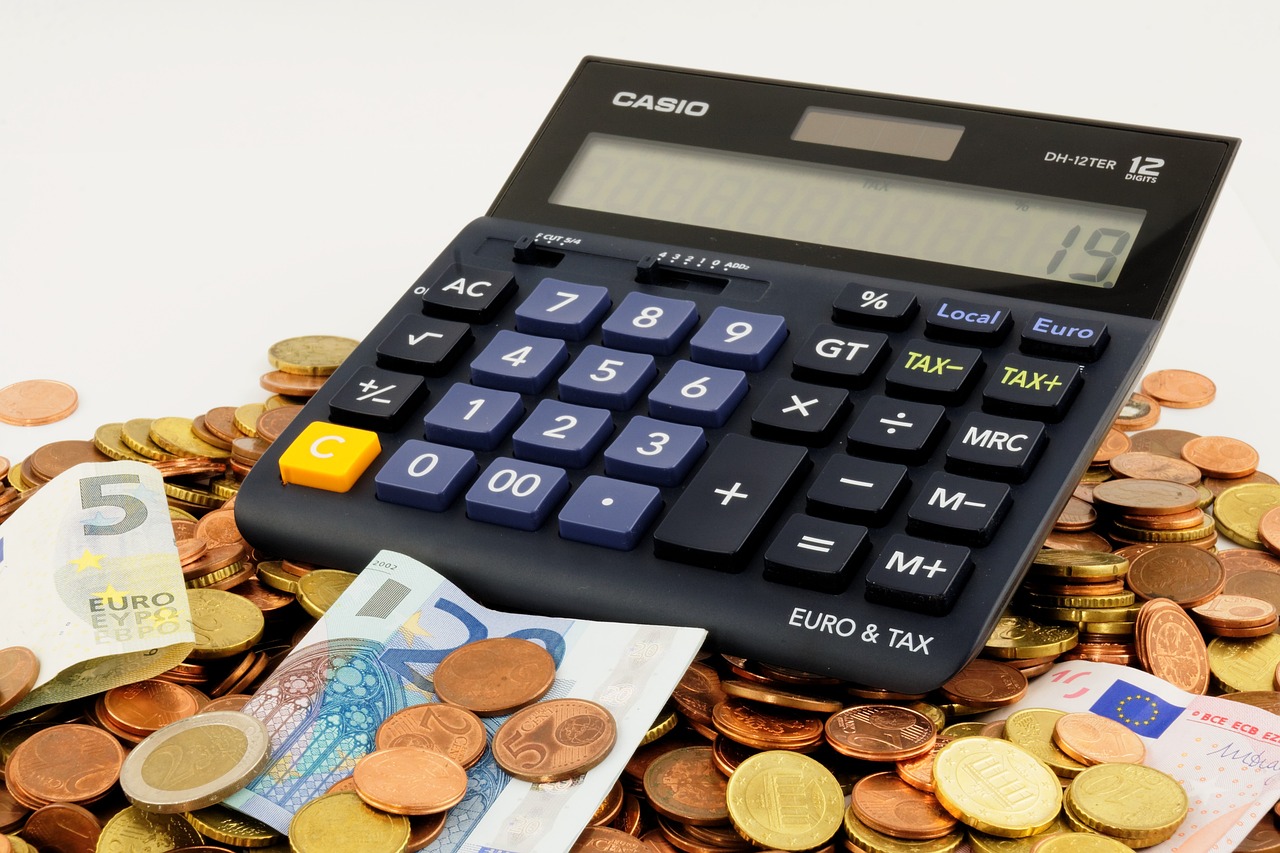Maximizing Your Money Transfer to the Philippines: All You Need to Know
GPT_Global - 2024-02-15 03:30:04.0 662
Is there a limit on the number of transactions I can make when sending money to the Philippines?
When sending money to the Philippines, many people may wonder if there is a limit on the number of transactions they can make. The answer is yes, there are limits in place for certain types of remittance transactions. However, these limits may vary depending on the country you are sending money from and the remittance service provider you are using.
The most common type of remittance transaction is through bank transfers. In this case, there is usually no limit on the number of transactions you can make. You can send money as often as you want as long as you have enough funds in your account to cover the transfer.
On the other hand, if you are using a remittance service such as Western Union or MoneyGram, there may be a limit on the number of transactions you can make per day. This is to prevent money laundering and other illegal activities. For these types of services, the limit is usually around five transactions per day.
It's important to note that the limit on the number of transactions only applies to sending money. If you are receiving money in the Philippines, there is no limit on the number of transactions you can receive. You can receive money from multiple sources without any restrictions.
If you exceed the limit on the number of transactions for a certain service provider, you may encounter a delay or rejection of your transaction. Therefore, it's important to check with your remittance service provider to understand their specific limitations and avoid any inconveniences.
In conclusion, there may be a limit on the number of transactions you can make when sending money to the Philippines, but it varies depending on the service provider and type of transaction. It's always best to be aware of these limitations and plan accordingly to ensure smooth and hassle-free remittances.

Are there any taxes involved when sending money to the Philippines?
Sending money to the Philippines can be a convenient and efficient way to support family or friends, take care of expenses, or invest in business opportunities. However, one question that often comes up is whether there are taxes involved when sending money to the Philippines.
The answer is yes, there may be some taxes involved when sending money to the Philippines, depending on the amount and purpose of the remittance. Here are some things you need to know:
1. Remittance Tax
The Philippines has a remittance tax system in place, which means that any money sent to the country from abroad is subject to taxation. The tax rate is determined by the type of remittance and its purpose. For example, personal remittances such as gifts, donations, or regular support for family members are taxed at a lower rate compared to business-related remittances.
2. Value-Added Tax (VAT)
In addition to the remittance tax, certain services related to money transfer may also be subject to the 12% Value-Added Tax (VAT). This includes services provided by banks, money transfer operators, and other remittance companies. The sender is usually responsible for paying this tax.
3. Documentary Stamp Tax (DST)
Another tax that may be involved is the Documentary Stamp Tax (DST), which is a tax on documents, loan agreements, and transactions. This tax is applicable to wire transfers, money orders, telegraphic transfers, and other forms of electronic transmissions. Like the VAT, the sender is usually responsible for paying the DST.
4. Exemptions
There are some exemptions to these taxes, such as remittances made by overseas Filipino workers (OFWs) up to a certain amount. It's best to check with your remittance company or the Bureau of Internal Revenue (BIR) for any applicable exemptions.
Conclusion
While there are some taxes involved when sending money to the Philippines, they are usually minimal compared to the total amount being remitted. It's important to factor in these taxes when planning your remittances and to choose a reputable and transparent remittance company that can help you understand and comply with tax regulations. With proper knowledge and guidance, you can ensure that your hard-earned money reaches your loved ones in the Philippines without any hiccups or surprises.
How do I ensure that my money transfer to the Philippines is secure?
Remittance is a popular way of sending money from one country to another, and the Philippines is one of the top destinations for remittances. With over 10 million Filipinos living and working abroad, it is important to ensure that your money transfer to the Philippines is secure.
The first step in ensuring the security of your money transfer is to choose a reputable and trustworthy remittance service provider. Look for companies that are licensed and regulated by the appropriate authorities. This will give you peace of mind knowing that your money is in safe hands.
Another important factor to consider is the exchange rate and fees charged by the remittance company. Make sure to compare different providers to get the best deal. However, be cautious of companies that offer extremely low exchange rates or charge very high fees, as this could be a red flag for potential scams.
It is also essential to provide correct and accurate information when initiating a money transfer to the Philippines. Any errors in the recipient's name, account number, or any other details could result in delays or even loss of funds. Always double-check the information before completing the transaction.
To further secure your money transfer, you can opt for options such as bank-to-bank transfers or using a PIN code system. These methods require the recipient to present a valid ID or a unique code before receiving the funds, ensuring that only the intended recipient can access the money.
In addition to these measures, it is crucial to keep your transaction receipts and tracking numbers, especially when sending large amounts. This will serve as proof of the transaction and enable you to track the status of your remittance.
Last but not least, always trust your instincts. If something seems too good to be true or you are unsure about a particular remittance company, it is better to err on the side of caution and choose a different provider.
In conclusion, by choosing a reputable and licensed remittance service provider, providing accurate information, and taking additional security measures, you can ensure that your money transfer to the Philippines is secure. So go ahead and send your hard-earned money back home with confidence and peace of mind.
Can I send money to the Philippines using cryptocurrency?
Cryptocurrency has taken the world by storm, and it's not just for buying goods and services online anymore. With the rise of digital currencies like Bitcoin, Ethereum, and Litecoin, sending money to the Philippines has become faster, cheaper, and more secure than ever before.
But can you really use cryptocurrency to send money to the Philippines? The answer is yes! With the growing popularity of digital currencies, many remittance businesses have started accepting cryptocurrency as a form of payment, providing Filipinos with a convenient and cost-effective way to receive money from abroad.
One of the major advantages of using cryptocurrency for remittances is the speed of transactions. Traditional methods of sending money to the Philippines can take days or even weeks to reach the recipient, while cryptocurrency transfers are almost instantaneous. This is especially beneficial in emergency situations where immediate funds are needed.
Moreover, sending money through cryptocurrency can also save you money in transaction fees. Most remittance services charge high fees for transferring money internationally, but with cryptocurrency, you can avoid these extra costs. Plus, the exchange rates for digital currencies are often better than those offered by banks or traditional remittance companies.
Another key benefit of using cryptocurrency for remittances is its transparency and security. Every transaction is recorded on a digital ledger, making it highly traceable and reducing the risk of fraud or theft. This provides peace of mind for both the sender and the receiver, knowing that their money is safe and can be easily tracked.
In addition, using cryptocurrency can eliminate the need for intermediaries, such as banks or money transfer agents, which can be time-consuming and expensive. By cutting out the middlemen, you can ensure that your money is directly transferred to the recipient without any additional charges.
In conclusion, sending money to the Philippines using cryptocurrency is not only possible, but it also offers various advantages over traditional remittance methods. With its speed, cost-effectiveness, transparency, and security, it's no wonder that more and more people are turning to digital currencies for their financial transactions. So, the next time you need to send money to the Philippines, consider using cryptocurrency as your preferred method.
What do I need to know before sending money to a relative or friend in the Philippines?
The Philippines is one of the top destinations for overseas Filipino workers (OFWs) and a popular country for international remittance. If you are planning to send money to a relative or friend in the Philippines, there are some important things you need to know. This article will provide you with essential information before making a remittance to the Philippines.
1. Exchange rates and fees
Before sending money, make sure to check the current exchange rates and fees of the remittance service you will be using. Some companies may have hidden fees or unfavorable exchange rates, which could significantly reduce the amount that your recipient will receive. It is best to compare different remittance providers to get the best deal.
2. Available remittance options
The most common ways to send money to the Philippines are through bank transfers, online money transfer services, and sending physical cash through money transfer agents. Research on the different options available and choose the one that is most convenient and cost-effective for you and your recipient.
3. Identification requirements
When sending money, you will need to provide your identification documents such as a valid ID or passport. The recipient will also need to present a valid ID when claiming the money. Make sure that the names on both IDs match to avoid any issues with the transaction.
4. Delivery time
The delivery time varies depending on the remittance service you choose. Online transfers are usually faster, while bank transfers may take a few business days to reflect in the recipient's account. Inform your recipient about the estimated arrival of the money to manage their expectations.
5. Security measures
It is crucial to ensure the safety and security of your money when making any transaction. Choose a reputable remittance company that has security measures in place to protect your funds and sensitive information.
6. Tracking the transaction
Most remittance companies offer tracking services to monitor the status of your transaction. Keep the tracking number or reference number and share it with your recipient for them to track the money's arrival as well.
Sending money to the Philippines can be a convenient way to support your loved ones back home. With these essential things in mind, you can make an informed decision and have a smooth and hassle-free remittance process. Remember to always choose a reliable and trustworthy remittance service for your peace of mind.
Is there a minimum amount I can send when transferring money to the Philippines?
When it comes to transferring money to the Philippines, many people wonder if there is a minimum amount that they have to send. The answer to that question depends on the remittance business you are using.
Some businesses do have a minimum amount requirement, usually ranging from $10 to $50. This means that you have to send at least that amount in order for your transaction to be processed. It is important to check with the specific business beforehand to ensure that you meet their minimum requirement.
Other businesses may not have a minimum amount requirement, but they may charge a higher fee for smaller transactions. This is because smaller amounts may not be as profitable for the business due to the fees and exchange rates involved in international transfers.
However, there are also businesses that offer low or even no fees for transferring any amount of money to the Philippines. These businesses may have partnerships or special arrangements with Philippine banks or financial institutions, allowing them to offer better rates and lower fees for their customers.
Ultimately, it is important to do your research and compare different remittance businesses to find the one that best suits your needs, whether you are sending a large or small amount. Keep in mind that fees and requirements may vary, so it is always best to check with the specific business before making a transfer.
Can I send money to the Philippines for business purposes?
If you're thinking of starting a business in the Philippines, one of the important things you'll need is a reliable way to send money to the country. Whether you need to pay suppliers or employees, it's crucial to have a secure and efficient remittance service.
Thankfully, there are many options for sending money to the Philippines for business purposes. One of the most popular methods is through a bank transfer. This allows you to send money directly from your bank account to a recipient's bank account in the Philippines.
Another option is through specialized remittance companies such as Western Union or MoneyGram. These companies have branches all over the world, making it easier to send money to the Philippines no matter where you are located.
Many digital platforms also offer remittance services, such as PayPal, TransferWise, and Remitly. These options are convenient for those who prefer to use online transactions.
When choosing a remittance service, it's important to consider factors such as fees, exchange rates, and delivery time. Some may charge higher fees but offer better exchange rates, while others may have lower fees but take longer to deliver the funds.
It's also essential to ensure that the service you choose is licensed and regulated by the appropriate authorities to avoid any potential scams or frauds.
In conclusion, sending money to the Philippines for business purposes is possible through various methods, including bank transfers, remittance companies, and online platforms. Researching and comparing different options can help you find the most suitable and cost-effective way to support your business in the Philippines.
Are there any alternative methods of sending money to the Philippines besides traditional bank transfers?
The traditional method of transferring money to the Philippines involves using a bank transfer. While this is a secure and reliable option, it can also be costly and time-consuming. Fortunately, there are alternative methods of sending money to the Philippines that offer more convenience and lower costs.
One option is to use a money transfer service such as Western Union or MoneyGram. These services allow you to send money online, over the phone, or in person at a physical location. They often have competitive exchange rates and fees, making them a popular choice for remittance.
Another alternative is to use a digital wallet or mobile money app. These platforms allow you to transfer money directly from your phone to a recipient's phone or bank account. Some popular options for sending money to the Philippines include GCash, Coins.ph, and PayMaya. These services offer fast and affordable transfers, making them a great choice for those who need to send money regularly.
Sending money through a prepaid debit card is another option. You can load the card with funds and then give it to the recipient, who can withdraw the money at an ATM or use it for purchases. This method is ideal for those who want to avoid high bank fees or don't have a bank account.
If you need to send a large amount of money, you may want to consider a wire transfer. This involves electronically transferring funds directly from one bank account to another. While this method can be more expensive than other options, it is typically faster and more secure for larger transfers.
In conclusion, there are several alternative methods of sending money to the Philippines besides traditional bank transfers. Depending on your specific needs, you can choose the option that offers the best combination of convenience, cost, and speed. Consider exploring these alternatives to find the one that works best for you and your recipient's needs.
About Panda Remit
Panda Remit is committed to providing global users with more convenient, safe, reliable, and affordable online cross-border remittance services。
International remittance services from more than 30 countries/regions around the world are now available: including Japan, Hong Kong, Europe, the United States, Australia, and other markets, and are recognized and trusted by millions of users around the world.
Visit Panda Remit Official Website or Download PandaRemit App, to learn more about remittance info.

